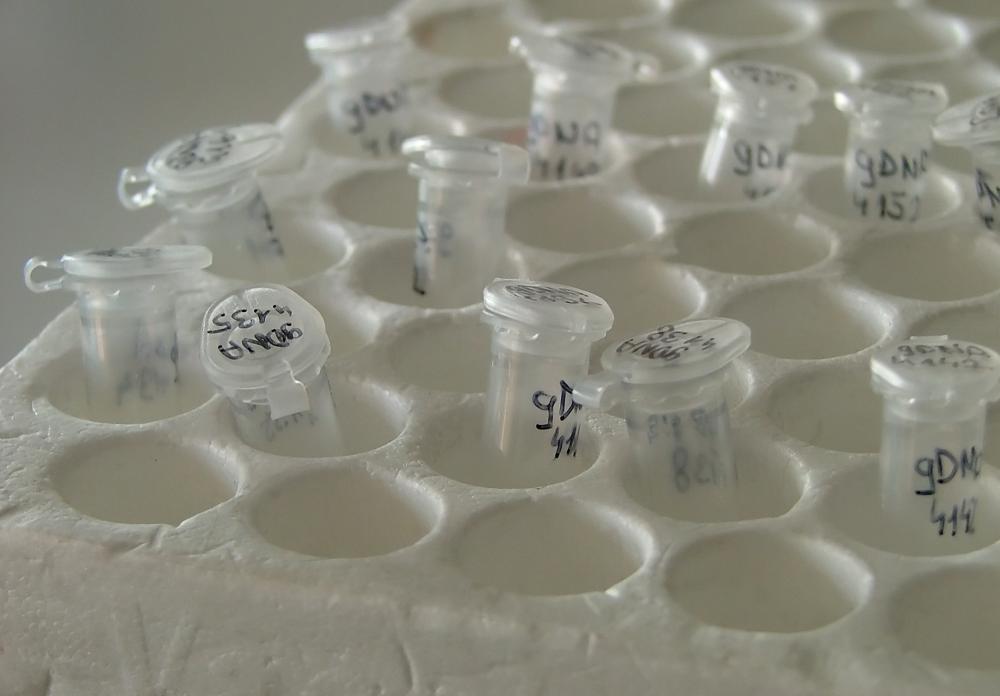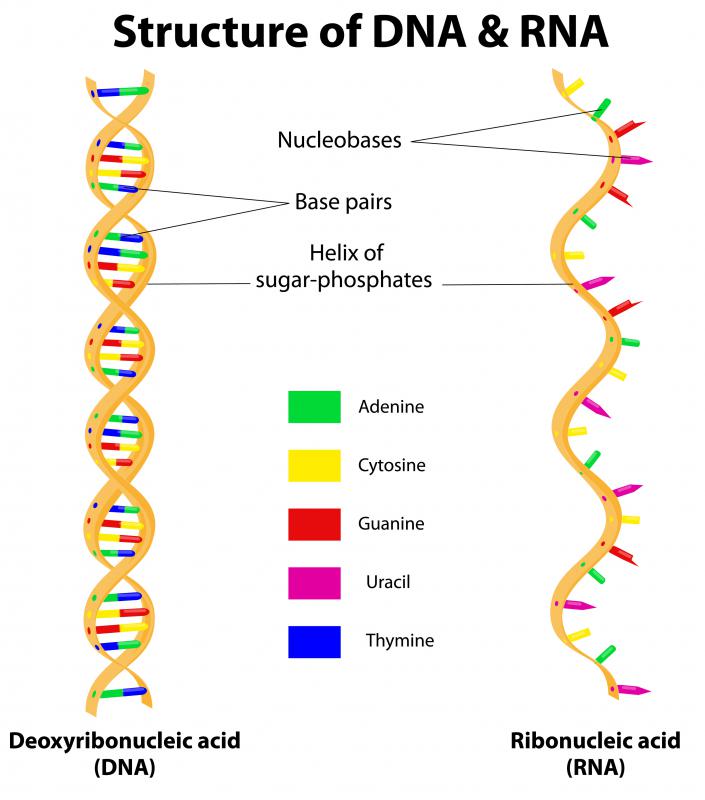At TheHealthBoard, we're committed to delivering accurate, trustworthy information. Our expert-authored content is rigorously fact-checked and sourced from credible authorities. Discover how we uphold the highest standards in providing you with reliable knowledge.
How Reliable Is a DNA Swab Test?
A DNA test examines the genetic material, deoxyribonucleic acid (DNA), that is found inside of all living human — and other — cells. One way of collecting DNA is through the use of a cheek swab, a process in which a sterile cotton swab is used to collect cells from inside the cheek to be used for the test. Since all cells in the same person have the same DNA, a swab test is just as reliable as any other method of DNA testing.
Because DNA comes half from the mother and half from the father, when it is examined in the laboratory, the DNA profile can be matched to both the mother and the father. If a test shows that a child’s DNA does not match one or both of the parents, the child is not biologically related to that parent. There is rarely any question of who the mother of a child might be, but DNA testing is often used to determine the identity of the father. According to laboratory information, a man can be determined to be a person’s father with as much as 99.99% accuracy, but if he is not the father, he can be ruled out with 100% certainty.

The DNA swab test is accepted by courts when making a determination of paternity. There is no difference between the cells inside of the cheek and the blood cells, in terms of DNA content. This makes DNA testing much easier and less invasive than it was in the past, when a blood sample was required in order to perform the testing. A DNA swab test can be done on a newborn infant with no pain or trauma to the child, providing accurate paternity results right from birth.

For parents who have some doubts about a child’s paternity, it is possible to purchase a home version of the DNA swab test and mail it to a laboratory. Collections done at home are not legally binding, but this simple procedure can help in many cases where a man is unsure if a child is really his or the mother knows that more than one man could be the father. Using a DNA swab test in such situations helps to remove doubt and to reassure the father. These tests cost well under $100 US Dollars (USD) as of the spring of 2011, and they are very helpful in resolving paternity disputes. If a paternity test must be done to establish legal paternity, courts will still accept the DNA swab test, but the collection must be done under controlled circumstances to ensure that the right people are being tested.
AS FEATURED ON:
AS FEATURED ON:


















Discussion Comments
@Mor - In some ways I wish we didn't have these kinds of DNA tests. Particularly paternity DNA testing. I think the parent should be considered the one who raised the child. It always horrifies me when I hear people joking about men who ended up raising someone who wasn't their blood for years, not realizing it. I like to think that it doesn't matter either way. Blood doesn't matter when it comes to parental responsibility.
Of course, some people might not be willing to care for a child that can't be proved to be theirs in the first place so there are definitely times when the testing can come in handy. I just wish there wasn't so much emphasis on it.
@irontoenail - It's the kids I feel sorry for as well. Apparently there have been quite a few cases where a person has used home DNA testing and discovered that they were adopted, or that their parents were not biologically their parents for whatever reason. So it must have been difficult for them to believe their mother when the evidence pointed another way.
It seems impossible, but there are cases where maternity can be placed in doubt because of the swab test. There has been at least one where a DNA testing swab of a mother was done and she was found to not be the parent of her children. She was then accused of stealing them.
It turned out, after a long court battle, that she actually was the mother and that she happened to have a rare condition where she had the DNA of two people in her body, because she had some living cells from her twin (who died in the womb) and those happened to be the ones that were tested.
Utterly bizarre. It must have been terrible for her to be told that she didn't give birth to her own children when she obviously knew that she did!
Post your comments